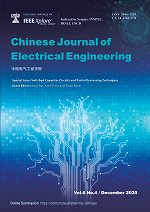|
|
Si/SiC Hybrid 5-level Active NPC Inverter for Electric Aircraft Propulsion Drive Applications
Majid T. Fard, Mostafa Abarzadeh, Kiavash A. Noghani, Jiangbiao He, Kamal Al-Haddad
Chinese Journal of Electrical Engineering
2020, 6 (4):
63-76.
DOI: 10.23919/CJEE.2020.000031
Medium voltage DC(MVDC) system is considered as a promising technology to improve the efficiency and power density of electric aircraft propulsion(EAP) drives. To adapt to the MVDC voltage level and achieve high drive performance, a five-level active neutral point clamped(5L-ANPC) inverter consisting of three-level ANPC and flying capacitor circuits is investigated, which possesses higher voltage capability, lower output harmonics, as well as mitigated dv/dt and common-mode voltage. To fulfill the requirements of high-speed operation and pursue further enhanced efficiency and power density of the inverter for the next-generation EAP drives, Silicon Carbide(SiC) semiconductor devices are considered for implementing the 5L-ANPC inverter. However, the large commutation loops associated with certain switching states of the inverter lessen the benefits of configuring all the switches as SiC devices. As a result, a hybrid Si/SiC 5L-ANPC inverter is developed with a synchronous optimal pulse(SOP) width modulation strategy for controlling the switches in cell 2 and finite-control-set model predictive controller(FCS-MPC) for those in cell 3 of the inverter. Consequently, in the proposed topology, the SiC devices are merely used for the high-frequency switches in cell 3 and the rest of the low-frequency switches are configured with Si IGBTs. This Si/SiC hybrid ANPC inverter concurrently provides high efficiency and low implementation cost at high-speed operation mode. Simulation and experimental results are provided to verify the effectiveness of the proposed hybrid inverter.
Reference |
Related Articles |
Metrics
|
|
